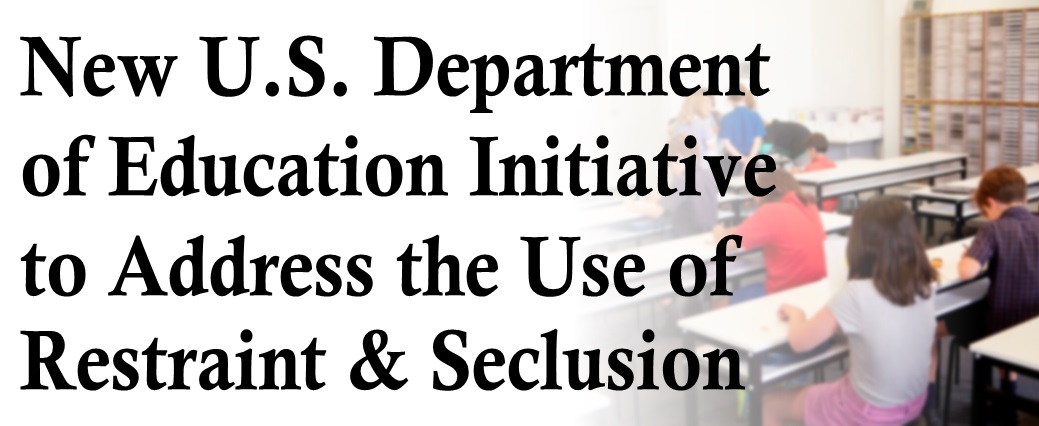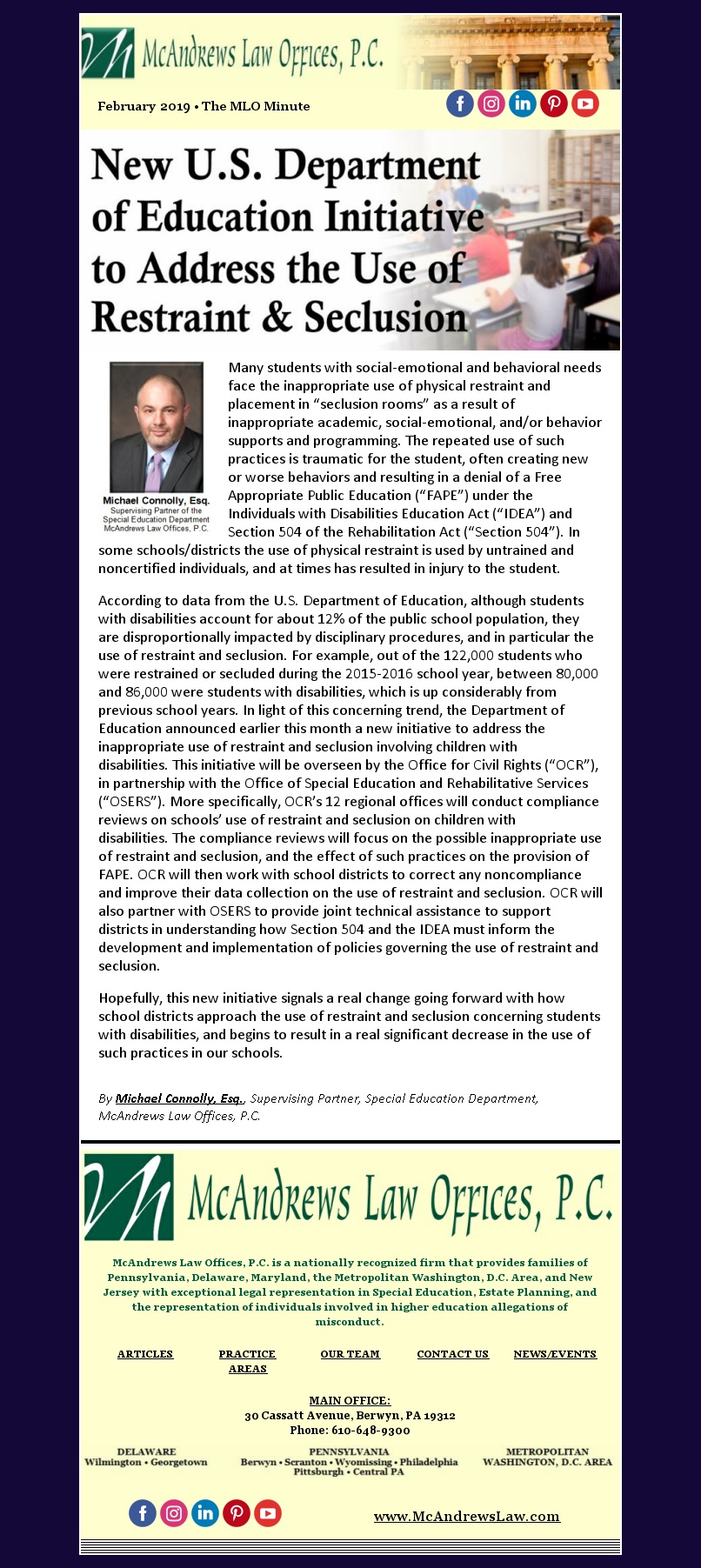February 2019
The MLO Minute
By Michael Connolly, Esq., Supervising Partner, Special Education Department, McAndrews Law Offices, P.C.
Many students with social-emotional and behavioral needs face the inappropriate use of physical restraint and placement in “seclusion rooms” as a result of inappropriate academic, social-emotional, and/or behavior supports and programming. The repeated use of such practices is traumatic for the student, often creating new or worse behaviors and resulting in a denial of a Free Appropriate Public Education (“FAPE”) under the Individuals with Disabilities Education Act (“IDEA”) and Section 504 of the Rehabilitation Act (“Section 504”). In some schools/districts the use of physical restraint is used by untrained and noncertified individuals, and at times has resulted in injury to the student.
According to data from the U.S. Department of Education, although students with disabilities account for about 12% of the public school population, they are disproportionally impacted by disciplinary procedures, and in particular the use of restraint and seclusion. For example, out of the 122,000 students who were restrained or secluded during the 2015-2016 school year, between 80,000 and 86,000 were students with disabilities, which is up considerably from previous school years. In light of this concerning trend, the Department of Education announced earlier this month a new initiative to address the inappropriate use of restraint and seclusion involving children with disabilities. This initiative will be overseen by the Office for Civil Rights (“OCR”), in partnership with the Office of Special Education and Rehabilitative Services (“OSERS”). More specifically, OCR’s 12 regional offices will conduct compliance reviews on schools’ use of restraint and seclusion on children with disabilities. The compliance reviews will focus on the possible inappropriate use of restraint and seclusion, and the effect of such practices on the provision of FAPE. OCR will then work with school districts to correct any noncompliance and improve their data collection on the use of restraint and seclusion. OCR will also partner with OSERS to provide joint technical assistance to support districts in understanding how Section 504 and the IDEA must inform the development and implementation of policies governing the use of restraint and seclusion.
Hopefully, this new initiative signals a real change going forward with how school districts approach the use of restraint and seclusion concerning students with disabilities, and begins to result in a real significant decrease in the use of such practices in our schools.





